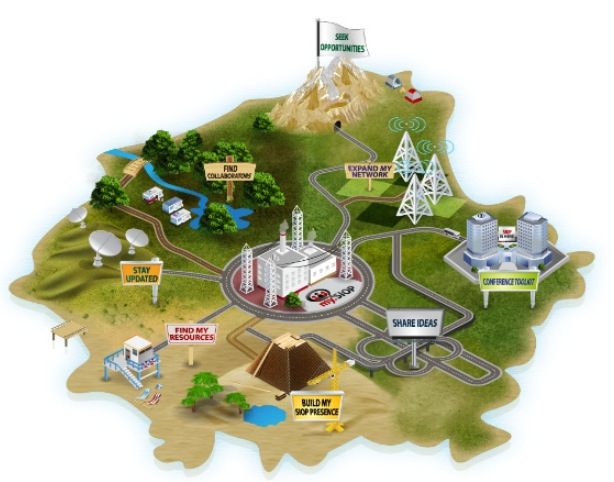
Note: This post was
originally published at Connect Meetings Intelligence.
Associations events are one of the oldest forms of community. They bring together people with a shared interest or purpose for learning, conversation and collaboration. They are exciting, fun and intense. If you’ve done your job right, attendees will say to themselves “I can’t wait until next year.”
But you shouldn’t wait that long. Your associations already stay in touch with members via email, Facebook, LinkedIn or other social groups. But why not bring the entire member base together, in one location, online? Work with your membership director or executive team to launch an online member community that can help you achieve active and sustainable member engagement. Here’s how:
1. Identify a community manager.
This person will be essential to the success of your online community. While it’s important to have at least one person designated to this role, it won’t require a full-time equivalent to start. Look to your member management or marketing functions for logical candidates, or consider your member base.
2. Allow members to help shape the community’s goals and features.
The first job of the community manager is to recruit an informal committee of active members whose input will help shape the mission of the online community. When your users help define, craft and shape the core elements of your online community, your chances of success are elevated. Include a mix of member types, from long-standing baby boomers to millennials.
3. Assemble your early adopter tribe.
Recruit a tribe of early adopters who will help seed activity in your community before it goes live. Include some members of the informal committee, but be sure to recruit others into the mix. First impressions are important, so ensure seed activity is enough for new members to be wowed the first time they log in.
4. Focus on getting the first 100 members.
The first 30 days and the first 100 active members are critical. If the first 100 members log in a few times and never return, you’ll be in crisis mode right away. But if those 100 members engage with the content, that will feed member growth. New members will observe the degree of activity and be encouraged to participate themselves. This positive momentum feeds off itself.
5. Publish a trail map for end users.

When I go skiing, the first thing I pick up (after the lift ticket) is a trail map. I like to map out how I’ll get the most out of my day. And, I need to know how to get from one side of the mountain to the other. You’ll be well served by publishing a trail map (example shown below) for your online community.
6. Migrate member communications to your online community.
Whether it’s information on renewal fees or award recipients, publish information first in your online community. Doing so will encourage greater adoption. Members will quickly learn that the online community is the place to go to find the latest information on what’s happening. Along those same lines, house your association’s educational content within the online community: webinars, links to industry articles, links to continuing education programs and more. Members have a convenient location to find everything, and will be able to converse and collaborate around this content.
7. Leverage the inherent desire for reputation and standing.
People have a natural desire to be respected and recognized, especially within a community of peers. Receiving recognition from industry peers can be more rewarding than a comparable reward from an employer. Gamify your online community platform to create vehicles for reputation. Some of the tools available to you include points, status levels, badges and privileges.
8. Encourage publishing and sharing of local events.
Online communities are great, but people still need to connect face-to-face. An online community is the perfect online destination for members to publish and share information about regional association events.
9. Plan, prepare and facilitate connections for your next annual meeting.
Members who engage in online interactions beforehand will have a more productive and enjoyable time at the annual event. They’ll discover connections and activities they otherwise would have missed.
10. Use other communication channels to draw people in.
Use all your channels—including email, social media, printed communications and regional events—to encourage members to participate in your online community. Your annual meeting should not be the one time all year when members convene and collaborate. By deploying an online community, you’ll be well on your way to year-round dialogue, increasing member satisfaction and making the annual event all the more rewarding and enjoyable.